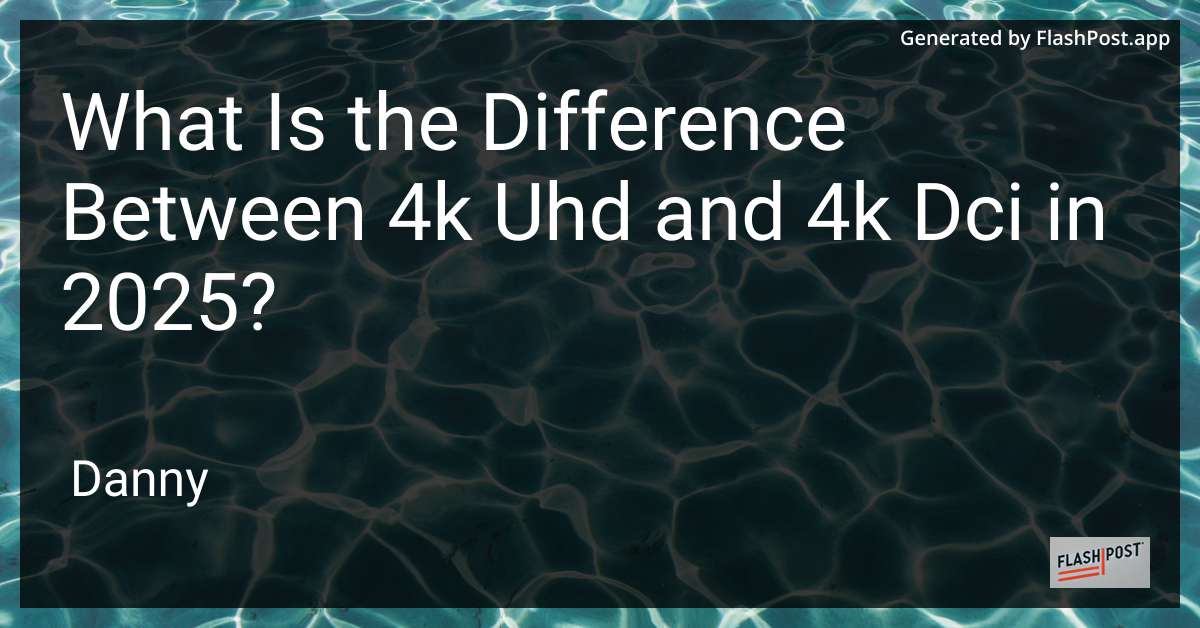
As consumer technology evolves, so does the quality of visual media. By 2025, terms like 4K UHD and 4K DCI are common in discussions around visual resolutions. But what precisely do these terms mean, and how do they differ? If you're shopping for the best OLED TV deals or exploring whether 4K projectors can replace TVs in your home, understanding this difference is crucial.
What is 4K UHD?
4K UHD, or Ultra High Definition, is a consumer display and broadcast standard. With a resolution of 3840 x 2160 pixels, 4K UHD offers a stunning visual experience, making it the go-to choice for home theaters and living rooms. It is the format you will most commonly encounter in consumer products like TVs, streaming services, and Blu-ray players.
Why 4K UHD?
- Widespread Availability: This resolution standard is supported by most consumer electronics, making it the most accessible for general viewing.
- Aspect Ratio: It adheres to a 16:9 aspect ratio, which aligns with the majority of television and monitor set-ups.
- Content Streaming: Major platforms like Netflix, Amazon Prime, and Disney+ offer a substantial library of content optimized for 4K UHD viewing.
What is 4K DCI?
4K DCI, or Digital Cinema Initiatives, is a resolution format used primarily within the cinematic industry. It measures 4096 x 2160 pixels, thus offering slightly more detail compared to 4K UHD. This format is particularly used in digital film productions to maintain the cinematic quality of movies.
Why 4K DCI?
- Cinematic Experience: Ideal for filmmakers, it replicates the quality and aspect ratio (17:9) found in professional cinema settings.
- Enhanced Detail: With more pixels, it is perfect for large-scale projections without losing image quality.
- Professional-Grade: Preferred by professionals who need impeccable visual fidelity and versatility in post-production editing.
Key Differences Between 4K UHD and 4K DCI
- Resolution: 4K DCI offers a slightly higher resolution (4096 x 2160) compared to 4K UHD's 3840 x 2160 pixels.
- Aspect Ratio: 4K UHD follows a 16:9 ratio, while 4K DCI is 17:9, accommodating wider frames typical of the cinema.
- Usage Context: 4K UHD is tailored for consumer use, whereas 4K DCI is crafted for professional cinema.
Conclusion
Understanding these two high-resolution formats can significantly enhance your media consumption decision-making process. While 4K UHD remains the staple for home entertainment, 4K DCI offers unparalleled depth for cinematic applications. Whether you are choosing a platform for cutting-edge nintendo switch lite TV connectivity or selecting the latest television system, recognizing the benefits and applications of each format is essential.
As technology advances, selecting the format that best suits your environment and expectations will ensure you get the most out of every viewing experience.